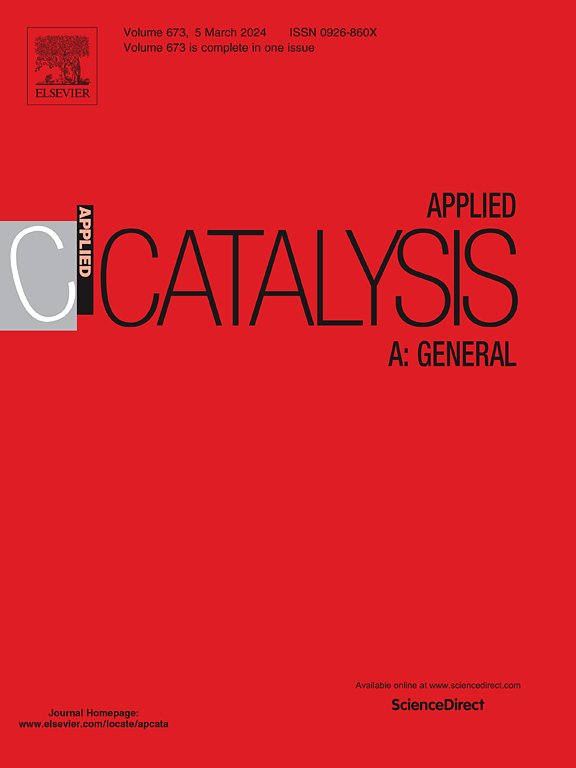TS-1和H2O2氧化正构烷烃:链长和溶剂的影响
IF 4.8
2区 化学
Q2 CHEMISTRY, PHYSICAL
引用次数: 0
摘要
研究了n-C8H18、n-C12H26、n-C16H34、n-C20H42和n-C36H74的选择性氧化反应,目的是利用这些模型为如何功能化聚烯烃提供见解。采用TS-1催化剂和H2O2在间歇式反应器中与甲醇、丙酮、乙腈、甲基乙基酮和甲基丁基酮等不同的助溶剂进行反应。随着烷烃尺寸的增大,反应速率降低,这可能是由于较大的烷烃在富水相中的溶解度降低。促进烷烃在水相中分配的助溶剂增加了反应速率。核磁共振氢谱分析表明,酮是主要产物,但也生成了一些醇。在烷烃的2位上有优先反应,但在中心碳上也有反应。本研究的结果提出了利用这种催化化学来功能化聚烯烃的策略。本文章由计算机程序翻译,如有差异,请以英文原文为准。
Oxidation of n-alkanes using TS-1 and H2O2: Effects of chain length and solvents
The selective oxidation of n-C8H18, n-C12H26, n-C16H34, n-C20H42, and n-C36H74 was studied with a goal of using these as models to provide insight into how to functionalize polyolefins. Reactions were carried out using a TS-1 catalyst and H2O2 in a batch reactor with different cosolvents, including methanol, acetone, acetonitrile, methyl ethyl ketone, and methyl butyl ketone. Rates decreased with increasing alkane size, possibly due to the reduced solubility of larger alkanes into the water-rich phases. Cosolvents that promote the partitioning of alkanes in the aqueous phase increased the rates. 1H NMR spectroscopy demonstrated that ketones were the primary products, although some alcohols also formed. There was preferential reaction at the 2 position in the alkanes, but reaction at central carbons was also observed. The results of this study suggest strategies for using this catalytic chemistry to functionalize polyolefins.
求助全文
通过发布文献求助,成功后即可免费获取论文全文。
去求助
来源期刊

Applied Catalysis A: General
化学-环境科学
CiteScore
9.00
自引率
5.50%
发文量
415
审稿时长
24 days
期刊介绍:
Applied Catalysis A: General publishes original papers on all aspects of catalysis of basic and practical interest to chemical scientists in both industrial and academic fields, with an emphasis onnew understanding of catalysts and catalytic reactions, new catalytic materials, new techniques, and new processes, especially those that have potential practical implications.
Papers that report results of a thorough study or optimization of systems or processes that are well understood, widely studied, or minor variations of known ones are discouraged. Authors should include statements in a separate section "Justification for Publication" of how the manuscript fits the scope of the journal in the cover letter to the editors. Submissions without such justification will be rejected without review.
 求助内容:
求助内容: 应助结果提醒方式:
应助结果提醒方式:


